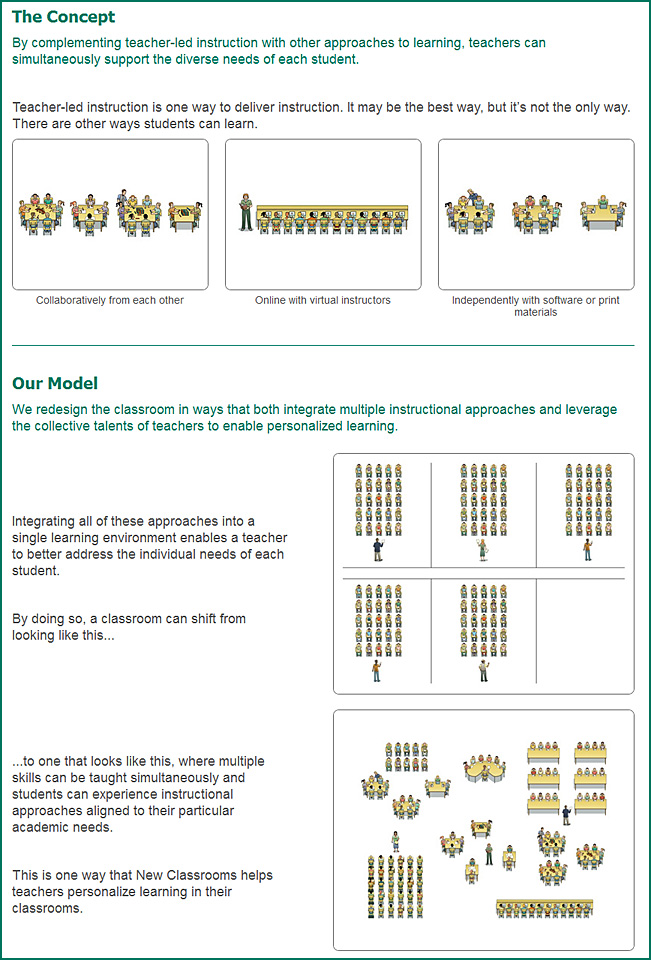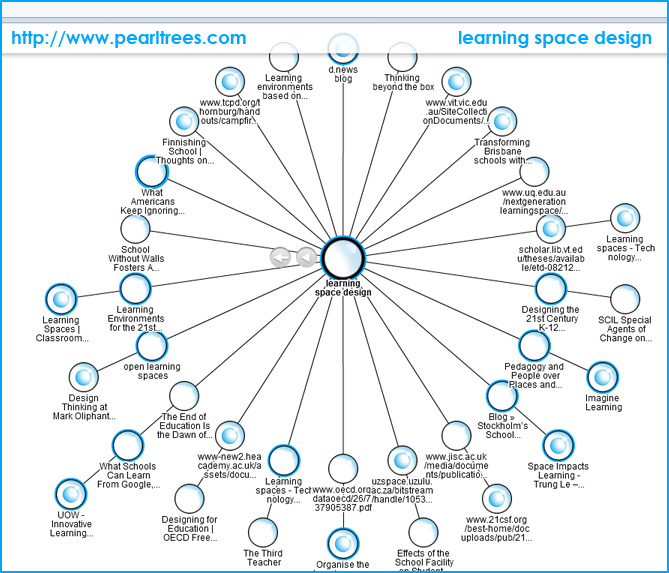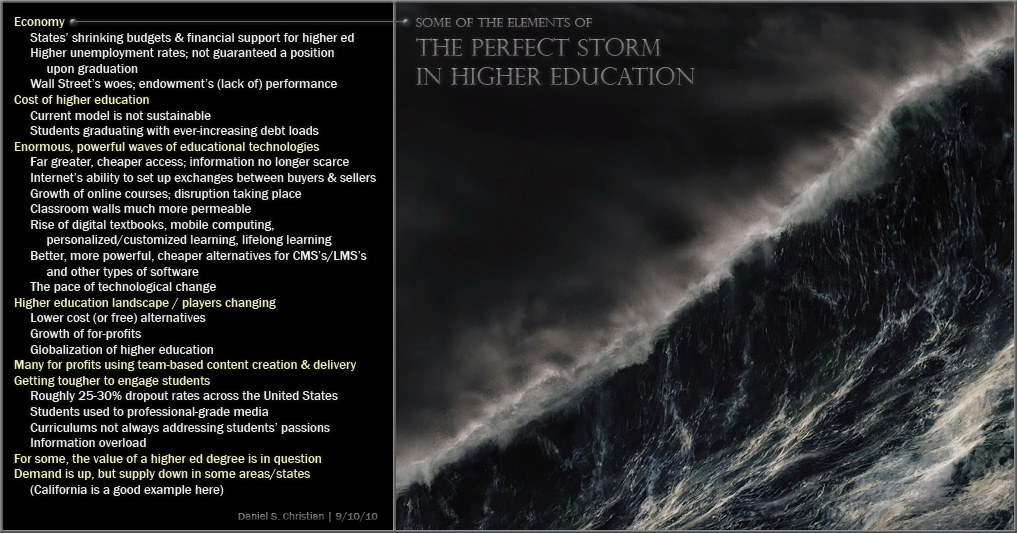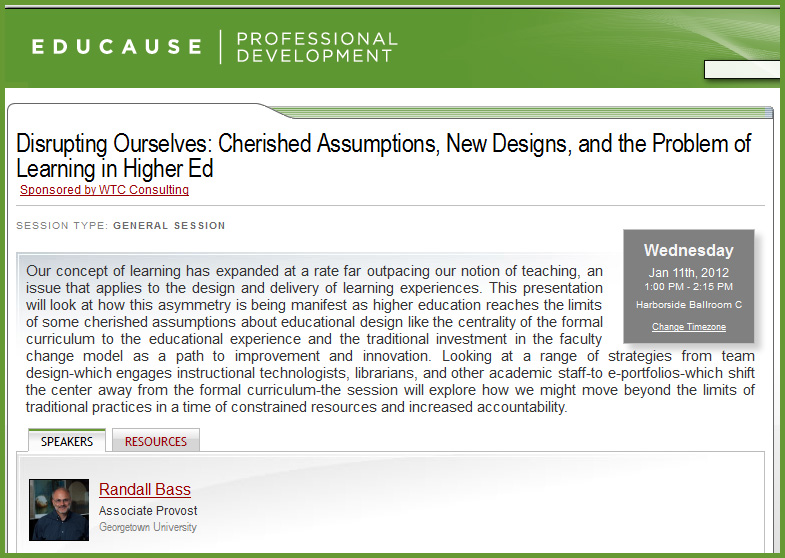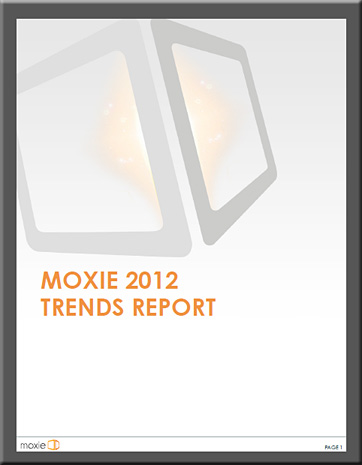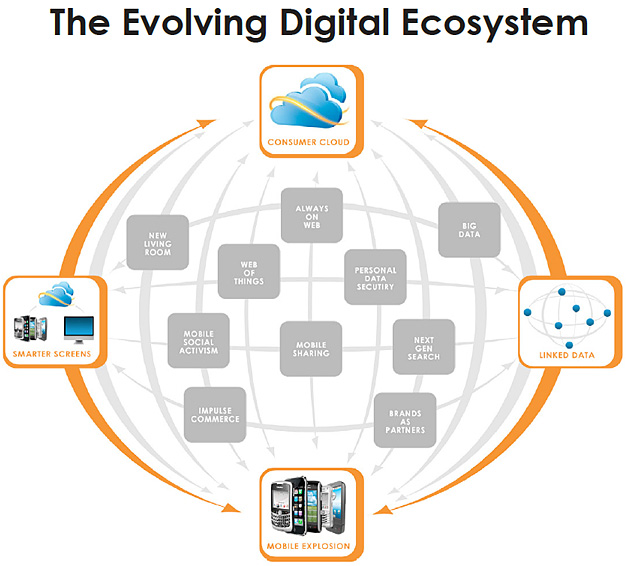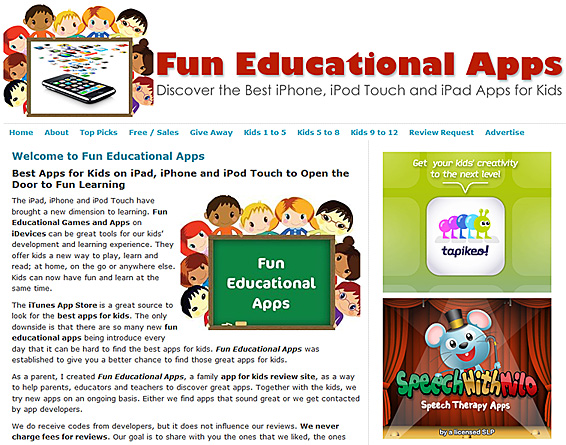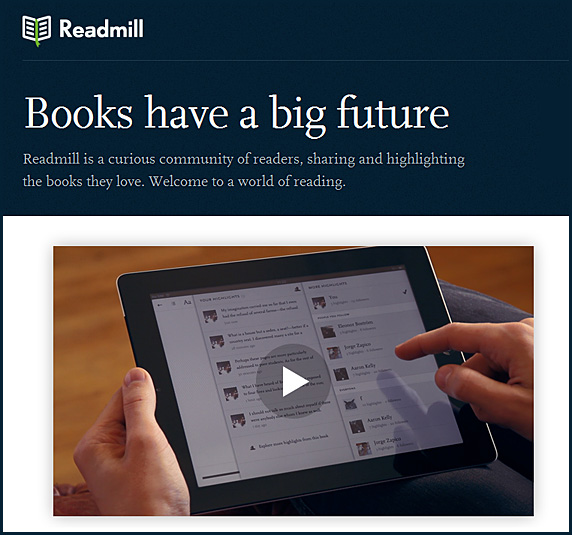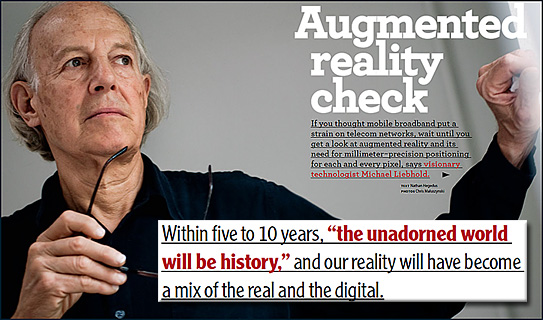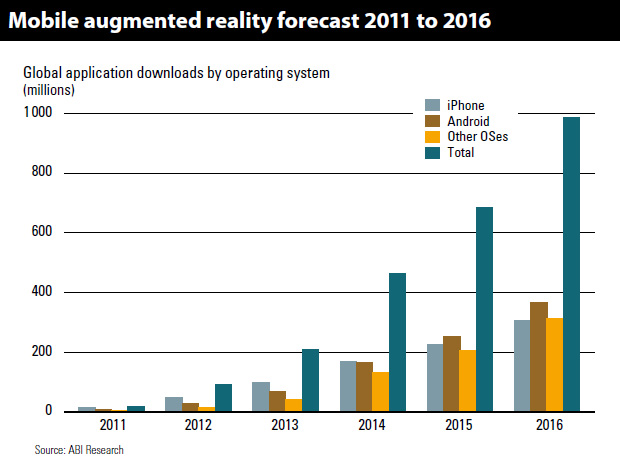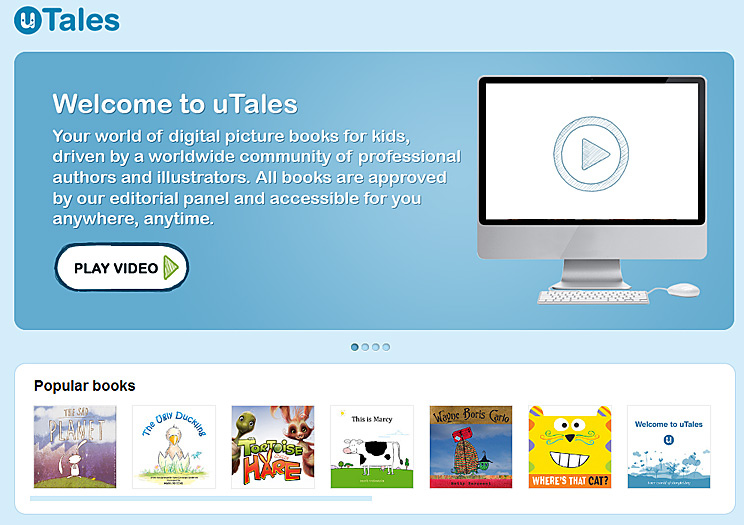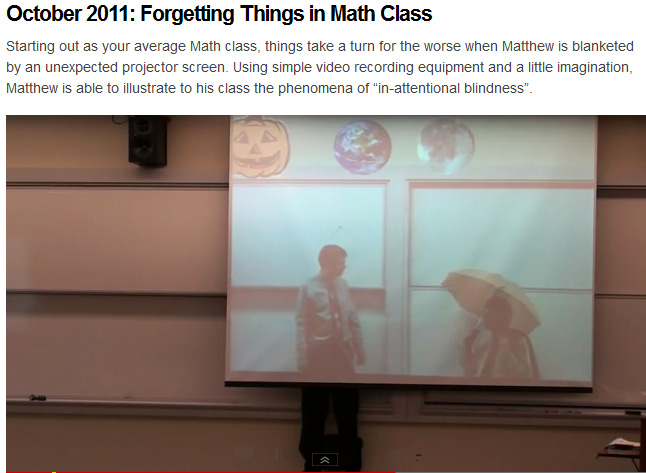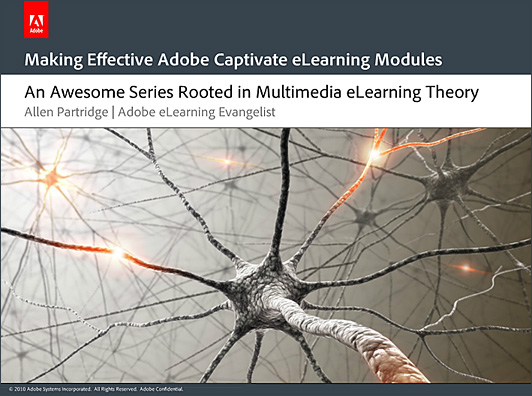The case for a learning space performance rating system — from oit.colorado.edu
Excerpt:
Citation: Elliot Felix and Malcolm Brown. (2011) “The Case for a Learning Space Performance Rating System,” Journal of Learning Spaces 1, no. 1. http://libjournal.uncg.edu/ojs/index.php/jls/article/view/287.
Summary: Calls for a rating system for educational spaces. This system would be like the LEEDs system for green buildings. Sketches out the elements such a system would need.
Key Points:
Also see:
This time its personal — from The Journal by Jennifer Demski
Excerpt (emphasis DSC):
Leading Through Technology
Thomas Greaves, CEO of The Greaves Group, an educational consulting firm, takes Cator’s point one step further and says that it’s doubtful personalized learning could happen–or at least, happen well–without the right technological tools in place.“The student, using technology, is better able to personalize their learning than a teacher is,” he says. “Teachers don’t have time to sit down and study each student, each day, in each course to figure out what they’re going to do differently with them. Teacher-driven personalization ends up being very weak, with very few factors, whereas if the students are leading their personalization via technology, then their instruction can be personalized based on a hundred variables instead of one or two.”
Greaves also seems to suggest that tech-driven personalized learning will, by its very nature, enable individualized learning and that holy grail of teaching, differentiated instruction, in which a teacher adapts classroom instruction to the various needs and skill levels of each student. Historically, differentiated instruction, as a practice, has been incredibly difficult, if not impossible, to implement in a teacher-centered learning environment that is driven by a print-based curriculum. Personalized learning may finally allow individualization and differentiation to actually happen in the classroom.
Ideally, tech-driven personalization combines the best of individualized learning–self-paced, diagnostic-driven–with the ability to adapt to a student’s specific learning styles, interests, and backgrounds. Personalization could be as simple as students compensating for any gaps in their pre-existing knowledge by allowing them to unobtrusively Google unknown terms during group instruction rather than raising their hand, or as sophisticated as students entering information about themselves into a piece of software that selects digital content based on the their interests and skill levels.
From DSC:
And with shrinking budgets, class sizes could easily be rising — making it even more difficult for teachers to try and implement customized/personalized learning without some type of assistance.
We may not be there yet…but we’ll get there. Using a historical analogy:
- Let’s go back to the early 80’s when the personal computer was just starting to be used much and the DEC’s of the world didn’t think much of them. But over time, as Clayton Christensen and Michael Horn pointed out in Disrupting Class, these new inventions picked up features and power, and eventually, they crushed DEC. (Seems to me I heard Kodak was going bankrupt too…)
Excerpt:
A REVOLUTION IN PERCEPTION is in the air, a transformation decades in the making. It will require a radical shift in viewpoint, as the way we experience data and information revolves 90 degrees from our traditional bird’s-eye view of maps, paper and screens to a more natural cinematic vision of the real world, one overlaid with digital information virtually attached to specific places.
And while augmented reality may still be in its infancy – with smartphone viewfinders displaying floating objects that are only vaguely connected to real places – don’t let that fool you.
The changes could reach far beyond mobile broadband and potentially be as profound as the development of the World Wide Web, says Michael Liebhold of the Institute for the Future. Liebhold forecasts that within five to 10 years, “the unadorned world will be history,” and our reality will have become a mix of the real and the digital. Telecom companies need to be ready, he says, to meet the demands of networks in which we are connected right before our eyes.
.
Matt makes his point on memory and attention in a very entertaining way
(…note the solid applause and genuine excitement at the end of the clip on math)
— from http://www.fractuslearning.com/2011/11/21/4-videos-from-matthew-weathers/
From DSC:
And, due to the date, check out the Symbols of Thanksgiving as well! 🙂
A list of Allen Partridge’s on-demand/online-based seminars (free, requires free ID at Adobe):
1: Making Effective Adobe Captivate eLearning Modules
… a foundation in multimedia design concepts for eLearning, and help you understand the reasons / rationale behind many of the eLearning strategies you see implemented today.
2: Balancing cognitive load in eLearning content with Adobe Captivate 5
…session focuses on the Multimedia eLearning Design Principle known as Personalization, which suggests that people learn more effectively when conversational styles and or learning agents are used to enhance the social aspects of the experience.
3: Applying Personalization to eLearning with Adobe Captivate 5
…session focuses on the Multimedia eLearning Design Principle known as Personalization, which suggests that people learn more effectively when conversational styles and or learning agents are used to enhance the social aspects of the experience.
4: Creating effective eLearning Multimedia with Adobe Captivate 5
…session will center on the Multimedia Principle (the importance of combining images & text) of eLearning Design.
5: Making Effective Adobe Captivate eLearning Modules Part 5: Contiguity
…the Contiguity Principle, which indicates that the spatial relationship (proximity) of symbols (like text) to analogous images (things that look like the subject of the learning) is significant, and plays a key role in how effectively we learn.
6: Making Effective Adobe Captivate eLearning Modules Part 6: Redundancy
…focuses on the Multimedia eLearning Design Principle known as Redundancy, which suggests that presenting symbols via both text and aural channels is less effective than presenting via only one.
7: Making Effective Adobe Captivate eLearning Modules Part 7 : Coherence
…focuses on the Multimedia eLearning Design Principle known as Coherence, which suggests that off topic ancillary material can distract from learning. This theory stands in opposition to arousal theory, providing research based evidence that when stimulating animation or any form of non-relevant information is provided, it can actually decrease the efficacy of the instruction.
8: Making Effective Adobe Captivate eLearning Modules Part 8: Segmenting
...the Multimedia eLearning Design Principle known as the Segmenting Principle, which suggests that authors of eLearning content should break content up into small pieces or chunks in order to help avoid cognitive overload for the learners.
9: Making Effective Adobe Captivate eLearning Modules Part 9: Pre-Training
The session focuses on the Multimedia eLearning Design Principle known as pre-training, which suggests that elearning content authors should first build up basic information about essential elements which are pre-requisites to understanding the larger concepts.
10: Making Effective Adobe Captivate eLearning Modules Part 10: Individual Differences
…the Individual Differences Principle, which suggests that design effects are stronger for low-knowledge learners than for high knowledge learners, and for high-spatial learners rather than for low-spatial learners.
More resources re: Adobe Captivate
Using Twitter? @AdobeElearning OR HASHTAG: #AdobeCaptivate
Using YouTube? http://www.youtube.com/adobeElearning/
On Adobe TV: http://tv.adobe.com/channel/e-learning/
Captivate Blog: http://blogs.adobe.com/captivate/
Also see:









